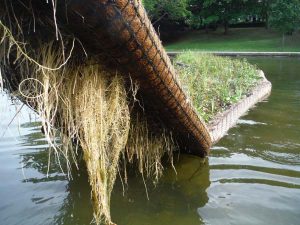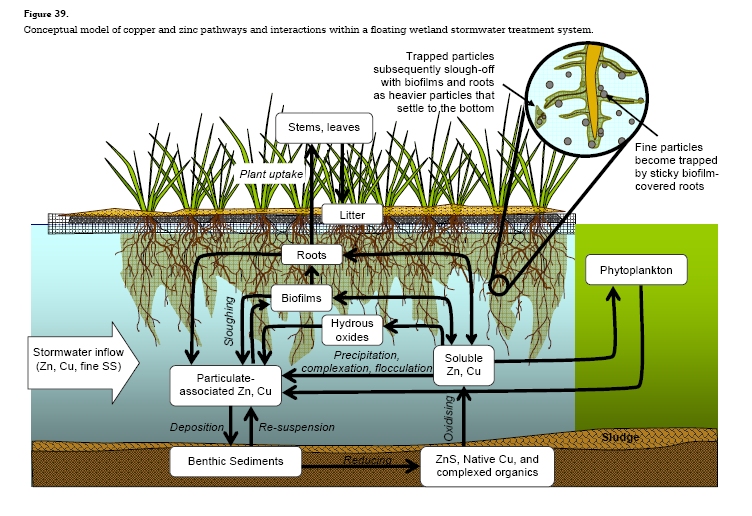Using Floating Islands for Wetlands Compensation
On the importance of wetlands
We now recongnize the critical importance of wetlands such as swamps, bogs and riparian strips for the environment. Their importance for mitigating flooding, purifying water and maintaining flora and fauna diversity are well documented.
Unfortunately, in our fast paced world the protection of wetlands and the progress of development are often in conflict. Developers, mining operations, infrastructure projects, the list is endless where wetlands are being squeezed, drained, bulldozed, crossed or somehow infringed upon. Regulations protecting wetlands may be improving but there are still instances when development in a wetland is allowed and wetland compensation may be required.
Floating Islands mimic natural wetlands
This is where Floating Islands come into the picture. Floating islands are, for all intents and purposes, riparian strips, and mimic th e functions of wetlands in a number of ways:
e functions of wetlands in a number of ways:
- In marshes, swamps, wetlands, lakes, rivers or along shorelines, Floating Islands offer an enormous root surface area in direct contact with polluted water. This surface area grows a biologically rich biofilm that purifies water by removing flow-through nutrients. The bacteria-rich biofilm consumes phosphorous, nitrogen, and turns these nutrients into vegetation, suitable for consumption by fauna in the system, assisting with nutrient removal using simply the natural food chain.
- Floating islands can replace the necessity of creating constructed wetlands, from a nutrient removal standpoint.
- Where shorelines are fragile, damaged or under restoration, Floating Islands help prevent further erosion by mitigating waves, and by encouraging plant roots to stabilize the shoreline, allowing back sediments to accumulate, fill in and regenerate the shoreline.
- Eutrophication can be slowed down in conjunction with floating islands and lake-bottom aeration. The aeration gives much needed oxygen at the benthic level, freeing up oxygen for other processes like decomposition.
- Planted with indigenous aquatic plants, a floating island can be an important seed source for re-establishing wetland plants once a region has been disturbed. Specially selected plants can grow quickly, receiving the perfect amount of water, nutrients, sunlight without competition that can be found on land.
- Corporations are looking to Floating Islands to enhance
environmental stewardship and to add another - “Green” aspect to their projects.


Related articles:
- Using Floating Islands to Help Maintain Wetlands
- Floating islands & Wetlands in Assiniboine Park Conservancy
- Ecological Swimming Pool: What is That?